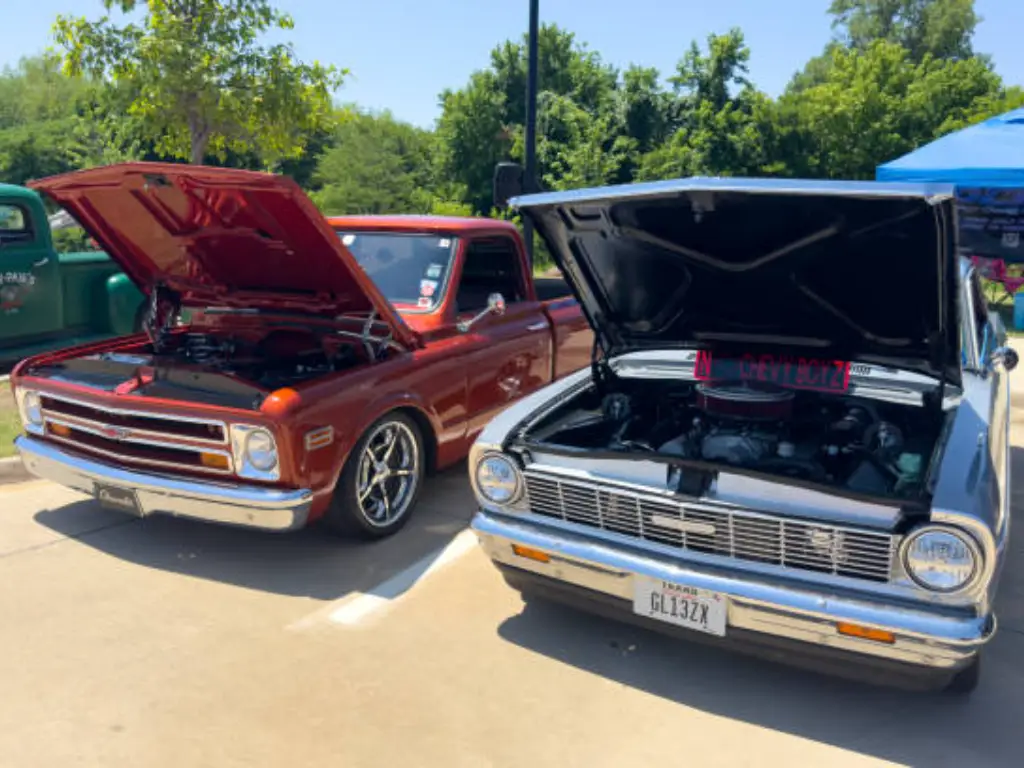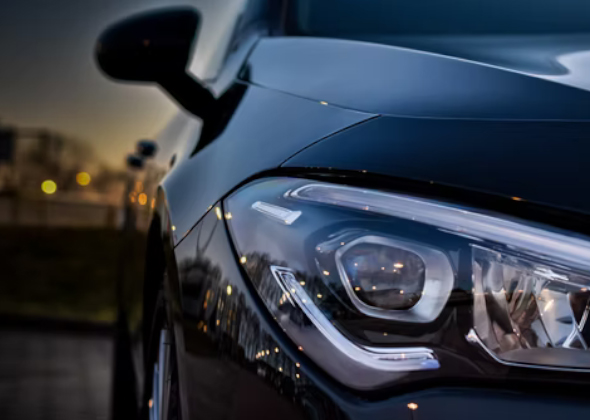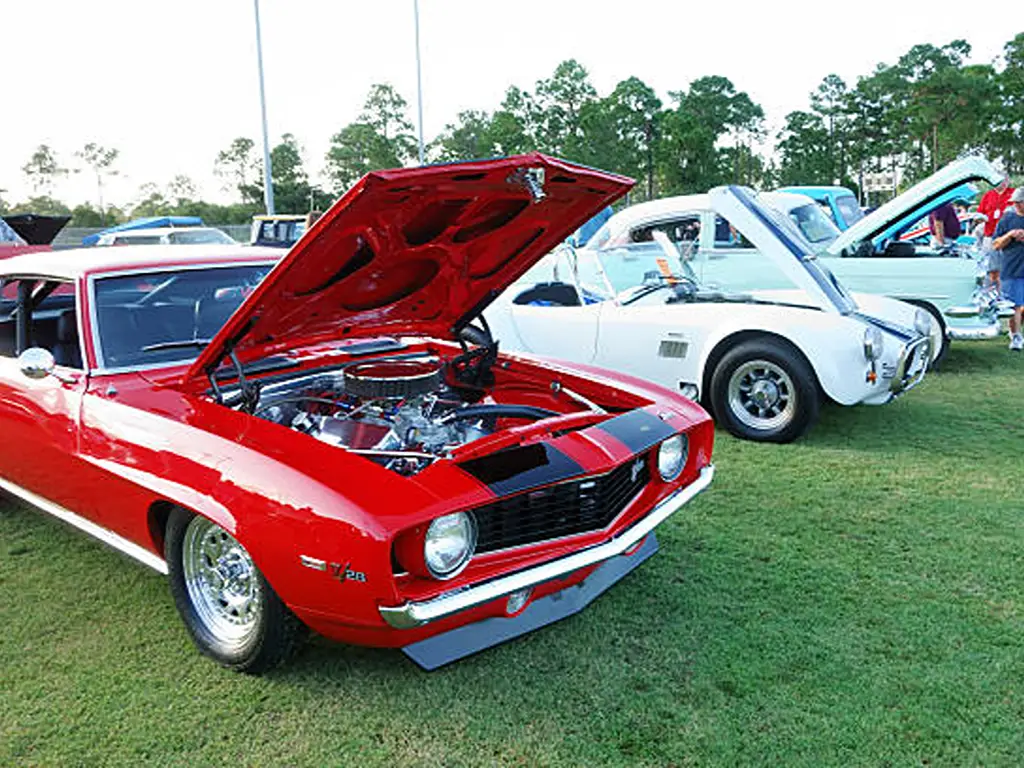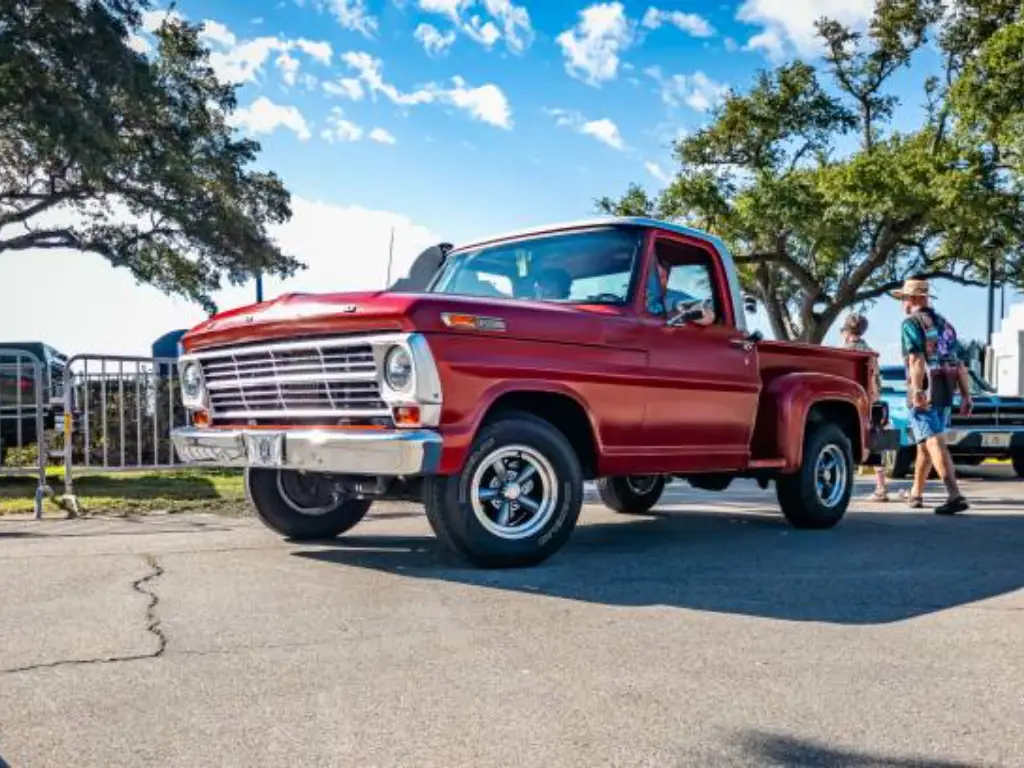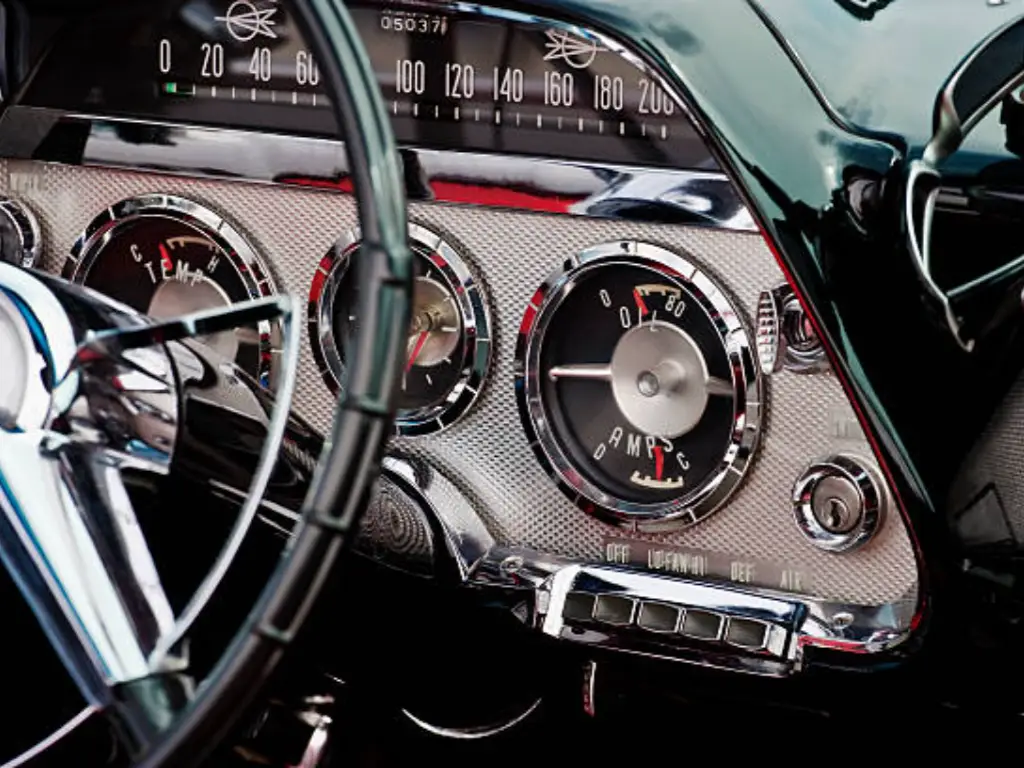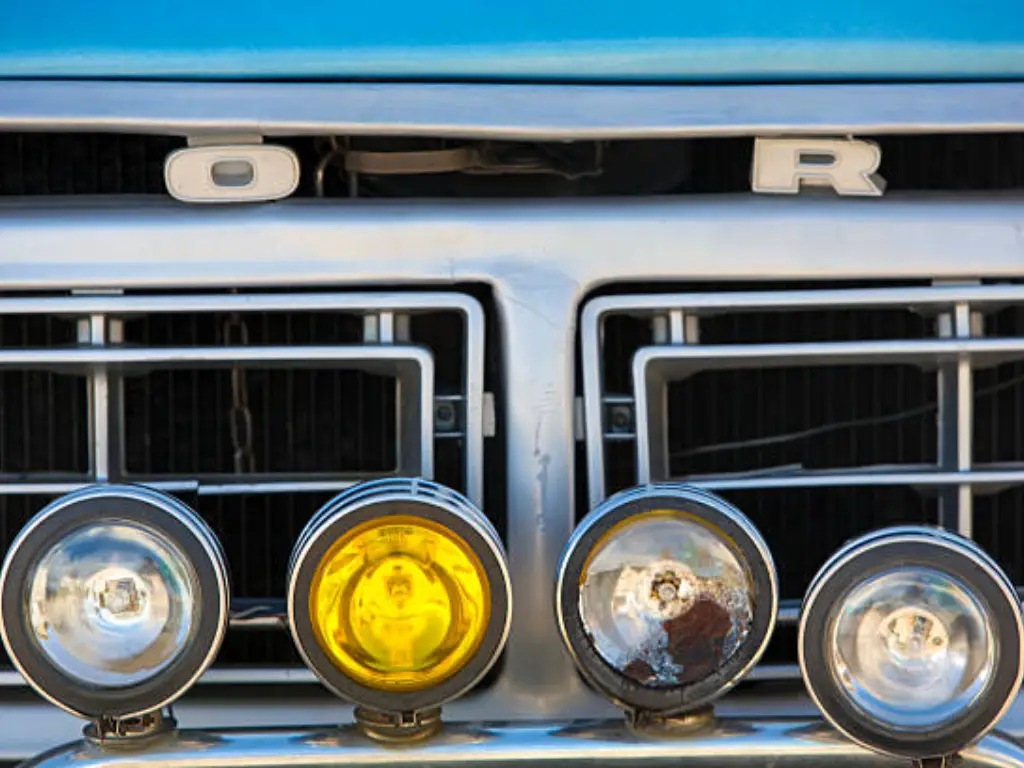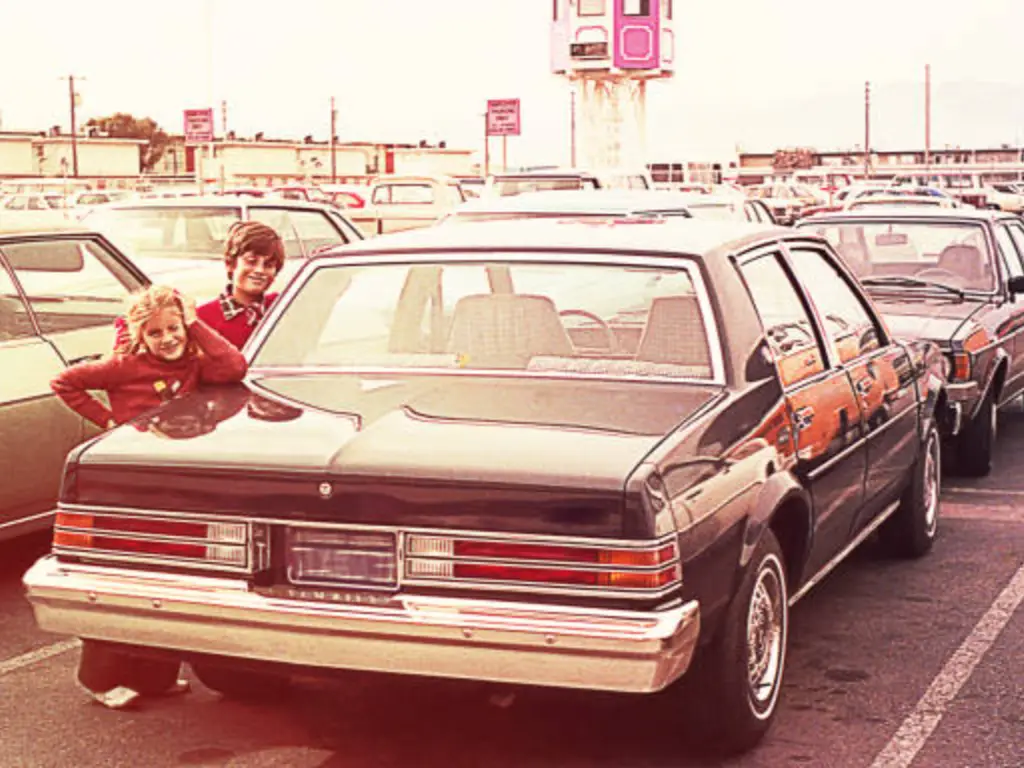
The 1970s. To the players in the automotive world, this was the most disruptive, challenging, and transformative decade in the history of automobiles. It started as a carry-over of the 60s with monster V8 engines and unlimited optimism, and finished with a new world of economy, smart, and globalized design that would render a new benchmark in car production in this world.
This was a decade of reaction. It was the time of pressure, an oil crisis that increased the prices of gas 4 times, new government rules that stifled performance, a new culture of no longer being in a hurry, but enjoying themselves in personal luxury. However, during the confusion, there was still the development of American cars and the balance between power and functionality.
Yet, pressure makes diamonds.
It is simple to discount the 70s as the Malaise Era, but this was the time of great restraint when some of the most distinct, recognizable, and culturally relevant vehicles in American automotive history were created. These vehicles were not just means of transportation, but they were images. They were also survivors who were admired by enthusiasts due to their strength and personality.
Pop-culture legends and ridiculously lavish land yachts to the outright revolution that was the 1970s car imports all come into play in this list, which narrates the story of the 1970s in the world of cars- a milestone in the development of the early models that redefined the sense of style, performance, and air. The famous Road Runner and other classics showed that even with restrictions, creativity was possible.
What Truly Defined the 1970s car?
In order to comprehend the cars, it is necessary to understand the forces that formed them. This was not a decade of creative freedom; it was a decade of survival-by-engineering. The untamed and wild spirit of the 1960s was running headfirst into a wall of global reality, and these three factors would determine the design of almost every car in this list, a moment that would forever change the American auto industry.
The 1973 Oil Crisis: How Gas Prices Killed the Muscle Car
In October 1973, a proclamation of an oil embargo was made by the Organization of Arab Petroleum Exporting Countries (OPEC). The impact was very short-term and devastating.
In the United States, car prices had increased by almost 400 percent in a single day. Fuel was no longer cheap and abundant. The big-block V8 muscle car with 7-mpg was a symbol of American domination and performance power, but it became an expensive, socially irresponsible dinosaur virtually overnight. People were no longer interested in horsepower but rather in miles per gallon, and the car manufacturers had to turn or die.
Others retaliated by inventing new technology – a test in fuel injection, lighter models – others by resorting to even more nostalgia, trying to retain the rebel machine ethos despite shifting conditions in the game.
New Regulations: The Rise of Safety Bumpers and Smog Controls
At the same time, the government intervened. The new National Highway Traffic Safety Administration (NHTSA) and Environmental Protection Agency (EPA) issued a new law that transformed the American auto industry both internally and externally.
- Safety: The new regulations established by NHTSA dictated that cars could endure a 5-mph impact (front-end collision) and a 5-mph impact (rear-end collision) without damage to the car (1973 and 1974, respectively). This spawned the notorious so-called “diving board” bumpers – colossal, bulging sheets of steel and rubber, which ruined the delicacy of chromed designs of the 60s.
- Emissions: The Clean Air Act of 1970 required a reduction of 90% of vehicle emissions. In order to comply with these standards by the 1975 model year, manufacturers were compelled to implement a new and power-consuming technology, the catalytic converter. Detuning of engines, lowered compression ratios, and decreases in horsepower were an omen of the end of a period of powerful performance of most muscle cars.
The “Personal Luxury” Boom: Comfort Over Speed
What might you not sell speed, you might have to sell? Comfort. The American car manufacturers responded by designing the Personal Luxury Coupe. This section caught off like a wildfire , led by high-volume sellers like the Chevrolet Monte Carlo and Ford Thunderbird. It was no longer 0-60 times but the Brougham experience: opera windows, padded vinyl covers on the roof, pillow-top velour fabrics, and acres of faux woodgrain. Autos such as the Chrysler Cordoba and the Dodge Charger swelled to the point that they shielded the driver against the unpleasantness of the world in a floaty ride that was whisper-quiet.
Although the prices of cars increased, consumers wanted to be sophisticated and not power-hungry, as it was in the olden times when people had the big block and rebel muscle cars.
10 Iconic 1970s Cars That Defined an Era of Automotive Style
It is on this crisis-driven series of regulations that 10 cars came into being that characterized the decade. There were those who struggled against the new reality, those who accepted it, and there were those who were merely born out of it.
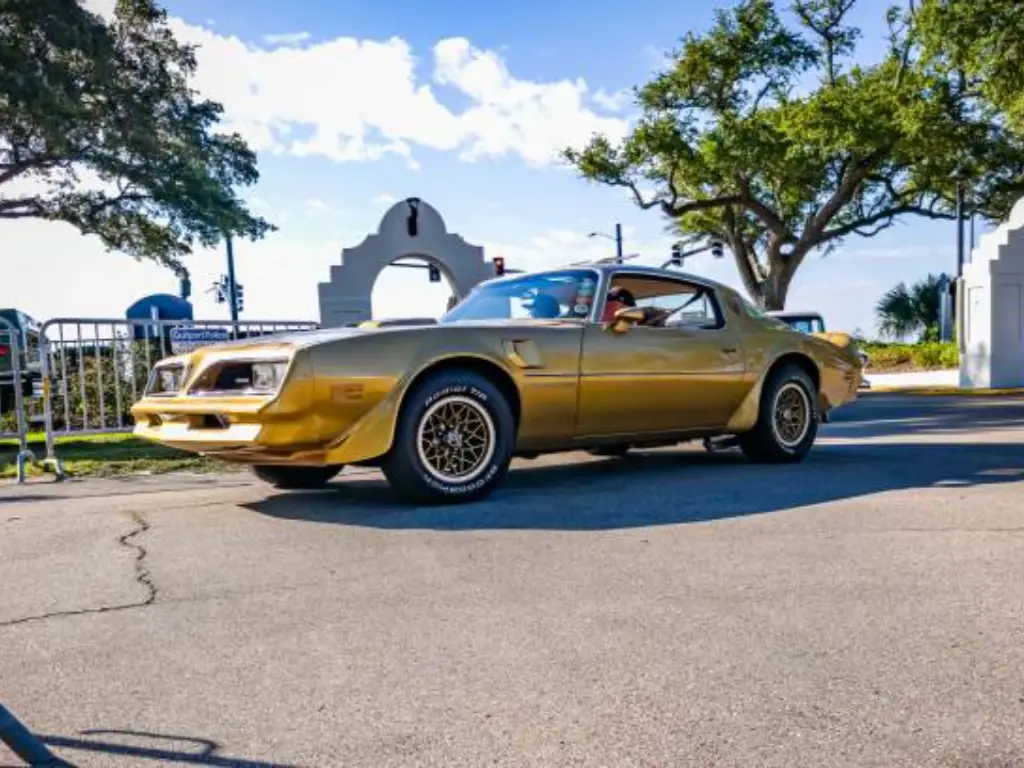
1. Pontiac Firebird Trans Am (Gen II), 1970
As the muscle car was being killed, the Pontiac Firebird Trans Am was not taking it meekly. It shared its “F-Body” platform with its corporate cousin, the Chevrolet Camaro, and together they represented the last bastion of American performance attitude. The second-generation Trans Am was the final stronghold of American performance attitude, and it was launched in 1970. The Trans Am survived by the middle of the decade because its rivals (such as the Cuda and Challenger) died out, and the car focused more on style rather than brute strength.
Its horsepower numbers were half of what they used to be; the powerful 455 V8 had only 200 hp by 1975, but its outward aggression was unrivaled. The Trans Am was all automotive drama with its shaker hood scoop, big fender flares, and, of course, the classic Screaming Chicken hood decal.
Its superstar came with its starring position in the 1977 film Smokey and the Bandit. It was the black-and-gold Special Edition model that would become the car of the 1970s whole generation, and it turned out that even during the times of limitations, a small rebellion could have been extremely effective.
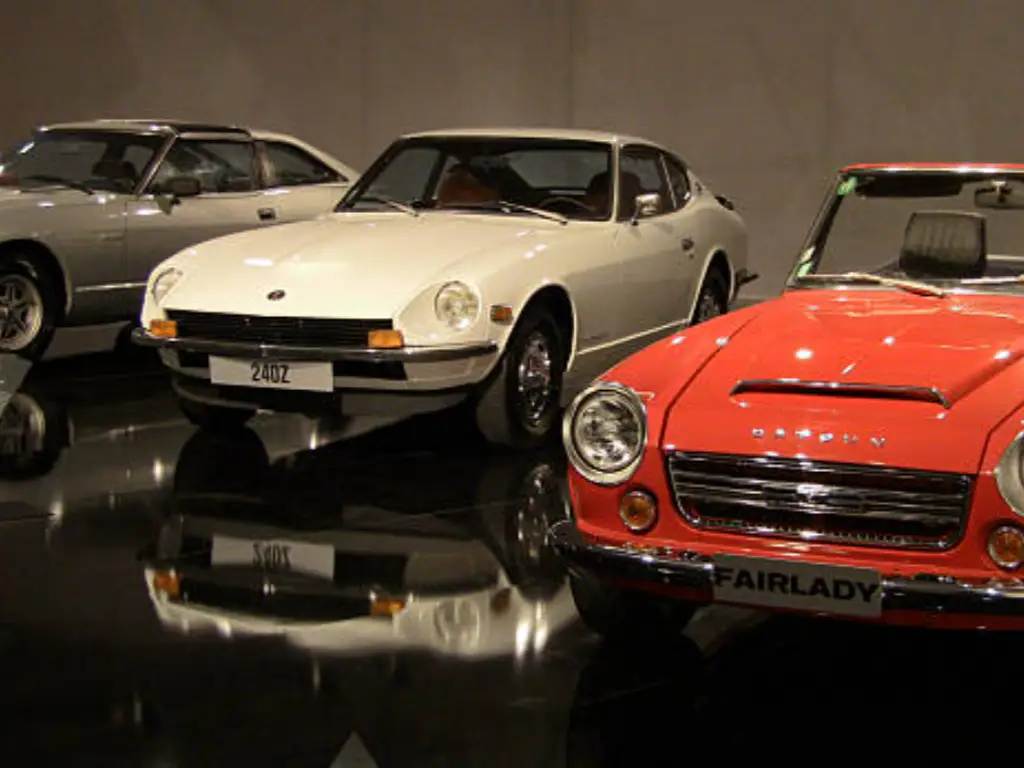
2. Datsun 240Z, 1970
In 1970, the idea of a dependable, low-priced, and beautiful sports car was virtually European. Then came the Datsun 240Z (called Fairlady Z in Japan). It was a revelation. It could also provide the gorgeous long-hood/short-deck lines of a Jaguar E-Type at a fraction of the price, with a simple sticker price of only $3,500.
But its beauty was more than skin deep. This was complemented beneath the hood with a 2.4-liter overhead-cam straight-six engine, which made 151 horsepower and amazingly sustained the torque throughout the rev range. Combined with a four-speed manual gearbox and a competent four-wheel independent suspension, the 240 Z was fast, stable, and involving – an ideal combination of horsepower and working torque that made the car a real driver.
Above all, it was trustworthy. As opposed to its British and Italian competitors, the 240 Z could always start, did not spill oil, and the electronics were functional. It broke the stereotype of the cheap economy car among Japanese automakers all by itself and rendered the world sports cars market forever different.
3. Cadillac Eldorado (Gen IX), 1971
In the case that you desire to witness the 1970s Personal Luxury boom in a single car, look no further than the ninth-generation Cadillac Eldorado. It was a car synonymous with excess. It was a genuine land yacht, being more than 18.6 feet in length, and designed to ride on air.
Its ratios were ridiculous, with a ridiculously long hood and a short back deck. The hood was home to the biggest ever production V8 engine, the 500-cubic-inch (8.2-liter) V8. Emissions control by 1975 had reduced this giant engine to a mere 190 hp, but that was not the point. The Eldorado was not made to be fast or win on the track, but rather was all about coming, being there, and being prestigious.
The iconic status was cemented with the 1976 model, which was literally sold as the last American convertible (a statement that was incorrect). It was the only car that was unquestionably the American luxury of the day, a symbol of comfort, not of sports car capabilities, with a prophetic top speed that could only be considered modest.
4. Volkswagen Golf (Mk1), 1974
When Datsun was making the sports car a reinvention, Volkswagen was in the process of making the people car a reinvention. The popular Beetle was an outdated product by the 70s. VW was in urgent need of a new car, and the 1974 Golf (sold as the Rabbit in North America) was a masterpiece in revolutionary design. It was so significant and immediate that it was given the European Car of the Year in 1975.
It was designed by Giorgetto Giugiaro, and its wedge shape, made of folded paper, was extremely contrasting to that of the Beetle.
Its mechanical layout was, however, the real innovation. It had a water-cooled transversal-mounted engine that drove the front wheels. This design also made the most of the interior room, producing a cabin that was appallingly spacious, considering how small the car was.
In 1976, two years later, engineers of VW engineers developed the Golf GTI. It had a 1.6-liter fuel-injected engine and sport-optimized suspension that was a totally new segment- the hot hatch. The Golf was the ideal car of a post-crisis world, efficient, practical, and unbelievably fun in GTI form.
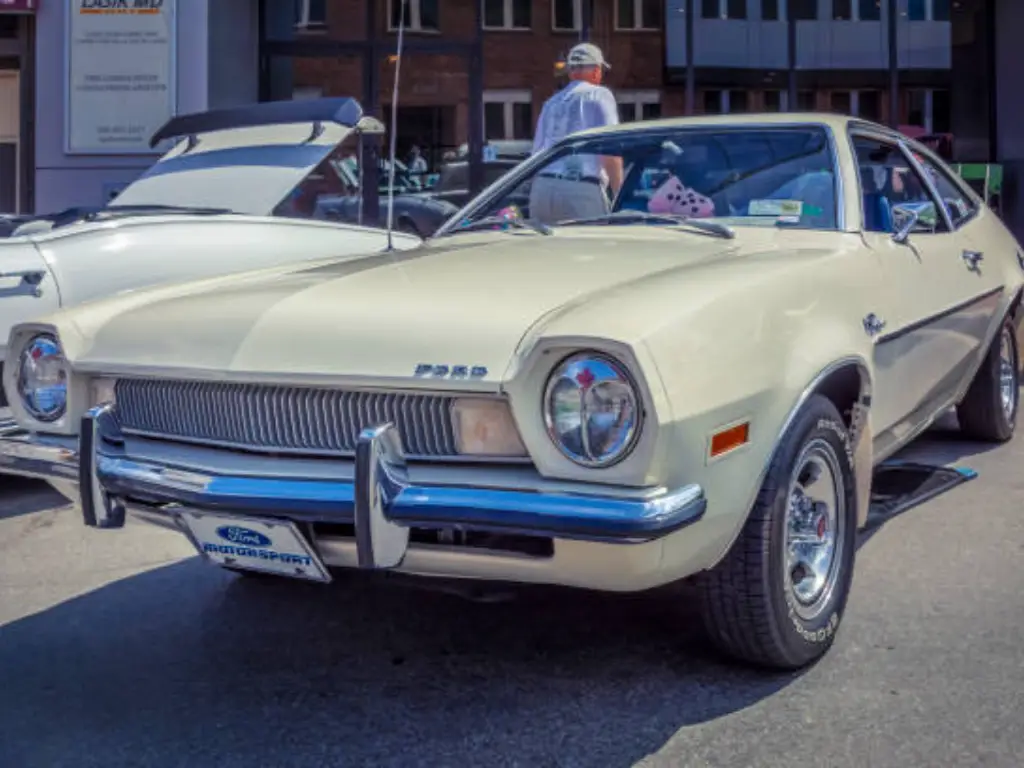
5. Ford Pinto, 1971
Not all icons are renowned for the right reasons. The Ford Pinto is the most notorious car of the 1970s. Produced in a hurry in 1971 to combat the ever-growing imports, such as the VW Beetle, the Pinto was an ambitious subcompact that was sold for under the price of $2,000.
It was the perfect answer to the market that was available on paper and was small, economical, and cheap to maintain. Its image, however, was permanently ruined when it was reported that its fuel tank design was extremely prone to bursting during an accident at the back end of the vehicle.
The lawsuits and media outbursts that followed caused the Pinto to become an icon of corporate cynicism. Although its real threat was contested statistically, the perception remained. The Pinto is a legend since it is a symbol of the desperate and at times unsuccessful attempts of American car companies to live in a new world.
This table shows the extremes of the decade where the American automakers were working on mass-producing huge luxury cars and, at the same time, were racing to produce small economy cars, with the performance disappearing.
| 1970s US Automotive Spectrum | Peak Muscle (Pre-Crisis) | Peak Luxury (Malaise Era) | The Compact Response |
| Example Model | 1970 Chevrolet Chevelle SS 454 | 1976 Cadillac Eldorado | 1971 Ford Pinto |
| Engine | 7.4L (454 cu in) V8 | 8.2L (500 cu in) V8 | 2.0L (122 cu in) I4 |
| Horsepower | 360 hp (LS5) | 190 hp | ~86 hp |
| Curb Weight | ~3,800 lbs | ~5,100 lbs | ~2,100 lbs |
| Market Focus | Speed & Performance | Comfort & Isolation | Economy & Price |
6. Lamborghini Countach (LP400), 1974
Even as America was creating Pintos, Italy was creating an imaginary figure. Lamborghini had already shocked the world in the 1960s with the Lamborghini Miura, the car that arguably invented the mid-engine supercar. How do you follow up a car defined by sensual curves? With a revolution.
The Countach, designed by Marcello Gandini, was an edgy, radical angle/vent/and intake wedge. It was not meant to be realistic; it was meant to create traffic jams. It had a V12 engine that was placed in the middle and the trademark scissor doors that could open straight up.
The purest form of the design, the original LP400 “Periscopio,” has been supplanted by the later versions with their giant fender flares and optional V-wing, though it later became the poster car of a whole generation. The Countach was the supercar of the 70s and the 80s.

7. Jeep CJ-7, 1976
It was also in the 1970s that the modern lifestyle car was born. In 1976, the Jeep CJ-7 marked a turning point in the development process of a bare-bones military utility vehicle into an ordinary consumer vehicle.
Its greatest modification was a 10-inch longer wheelbase in comparison with the older CJ-5. This apparently minor modification made a significantly greater difference in its on-road stability, ride comfort, and interior space, as well as made it far more suitable for daily use.
More importantly, the CJ-7 became the first CJ in which an automatic transmission was optional, and the system was full-time four-wheel-drive capable of being called the Quadra-Trac. These comfort-enhancing features led to a new market of customers who desired a go everywhere, rugged vehicle to have fun in and not necessarily work. It set the stage for the 1987 Wrangler and the SUV trend that would rise to the fore in the next decades.
8. Chevrolet Corvette (C3), 1968
The third generation (C3) Corvette was conceived in the 60s (1968), but it really dominated the 1970s fight. The Chevy C3 appeared to have been faster standing still than most vehicles in full throttle, with its exotic Coke bottle-shaped fenders and removable T-top roof panels.
This proved to be auspicious since its performance was draining out through the 70s. The C3 is the poster boy of the emission-suffocated “Malaise Era.” Take this into consideration: the 1970 LT-1 small-block V8 made 370 hp. By 1975, the V8 that the base Corvette was equipped with was generating a pathetic 165 hp.
But still, the Corvette was spared. Its brand heritage and the undisputable movie-star style were so strong that they continued to purchase it. It turned out that a car might become a symbol with its heritage and design, even in case its performance heart was taken out of the body temporarily.
9. Honda Civic (Gen I), 1972
The first-generation Honda Civic was a game-changer, just like the Datsun 240 Z. It came out in the year 1972, only a few months before the oil crisis, and its timing could not have been more appropriate. It was low-priced, small, and highly economical in terms of fuel consumption.
The genius of it was in the hood, however. As the American automakers were grappling with catalytic converters, Honda came up with its CVCC (Compound Vortex Controlled Combustion) engine. This groundbreaking design was so clean-up that it could pass the stringent new EPA emissions standards without the use of a catalytic converter or unleaded fuel.
It was a beautiful engineering masterpiece that immediately presented Honda with the image of brilliant innovation. As Detroit was constructing Pintos, Honda was constructing the future. The Civic was trustworthy, intelligent, and incredible to drive, and it opened the gates of the Japanese car invasion.
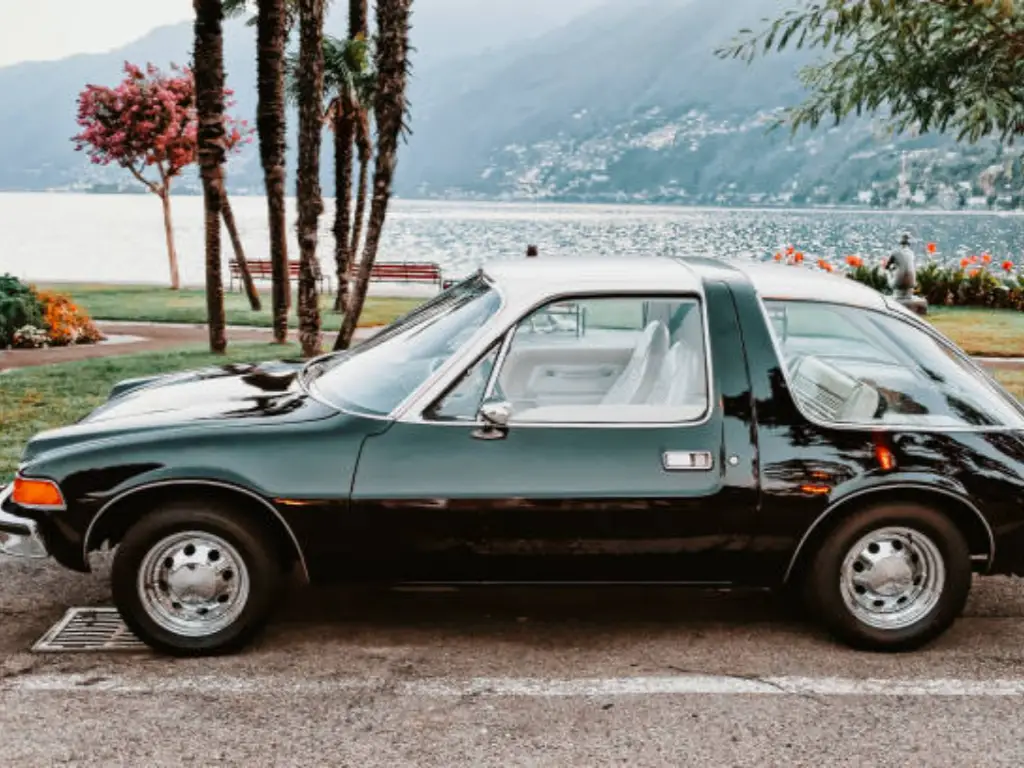
10. AMC Pacer, 1975
One of the most notorious weirdos of the 1970s could not be left off the list of the icons of the decade. The AMC Pacer was a gamble. It was billed as the first wide small car, which was to provide the interior room of a mid-size car in a small size.
Its design was… unique. It had a huge, rounded glass space that was referred to as the fishbowl. It was also characterized by an asymmetrical design: the door on the passenger side was 4 inches longer than the one to the driver, as it was designed to make the back seat more easily accessible.
The Pacer was a futuristic experimental project that was flawed and bold. It was bulky and its engines (both an AMC straight-six and then a V8) were thirsty, a death sentence in a post-crisis market.
Commercially unsuccessful, the Pacer (particularly once it was featured on Wayne’s World) has become a popular culture icon, a moving icon of the most ambitious and bizarre design experiments of the decade.
Keeping Your 1970s car on the Road
Having one of these icons, be it a Trans Am or a 240 Z, is another thing than just watching it. In 50 years, the truth dawns on you. Rubber decays, metals rust, wiring is brittle, and original parts are either not available at all or are prohibitively costly.
Locating a replacement part of the trim is one thing; locating a part that is critical and of high quality to the suspension, engine, or brakes is another thing. It is the problem that paralyzes most potential owners. It is where the ownership dream is confronted with the reality of maintenance.

The Solution: Precision Manufacturing for Your Classic
This is where Sunway Autoparts puts the gap between the dream and the seat of driver. We are not met with parts dealers; we are classic auto parts specialist manufacturers, in the business since 2007.
That is the laser-centered focus of our expertise in vehicles between the mid-1920s to the late 90s, with an insane focus on the 1960s, 70s, and 80s, the period of the cars mentioned in this list. We know the challenges of that particular vehicle, whether you are working on Ford, Volkswagen, Chevrolet, Land Rover, or Porsche.
When you order a component from us, you are not ordering a 50-year-old New Old Stock part that has been festering away on a shelf. It is a reverse-engineered part that has been re-produced with modern materials and processes, to original OEM standards. This translates to increased durability, over-tolerance, and high reliability compared to the factory original.
In the case of Restoration Shops and Distributors, we are the one upstream partner you should have. Our supply chain is quite complex, with almost 200 suppliers that enable us to offer consistent quality, guaranteed inventory, and desired bulk orders. We can take on a custom production or assist you in sourcing hundreds of various standard classic car items. Our logistics are taken care of, and you can do the restoration.
Conclusion
The 1970s car was a survivor. It was born during a decade of crisis and characterized by how it responded to it. This pressure did not kill the automobile; it made it develop and establish a new standard of design and engineering.
The first hot hatch, the emergence of a trustworthy Japanese sports car, the lifestyle SUV, and the outrage of the wedge-shaped supercar were all brought about by the ’70s. These models are not just three metal, vinyl, and glass models, but the moving, driving narrative of a decade of dramatic transformation in automotive history. They are icons, not despite their weaknesses, but despite them- favorites with generation-loving enthusiasts.
Did we overlook your 1970s favorite? Which American car do you think actually characterizes the decade? Would you like to tell us?


